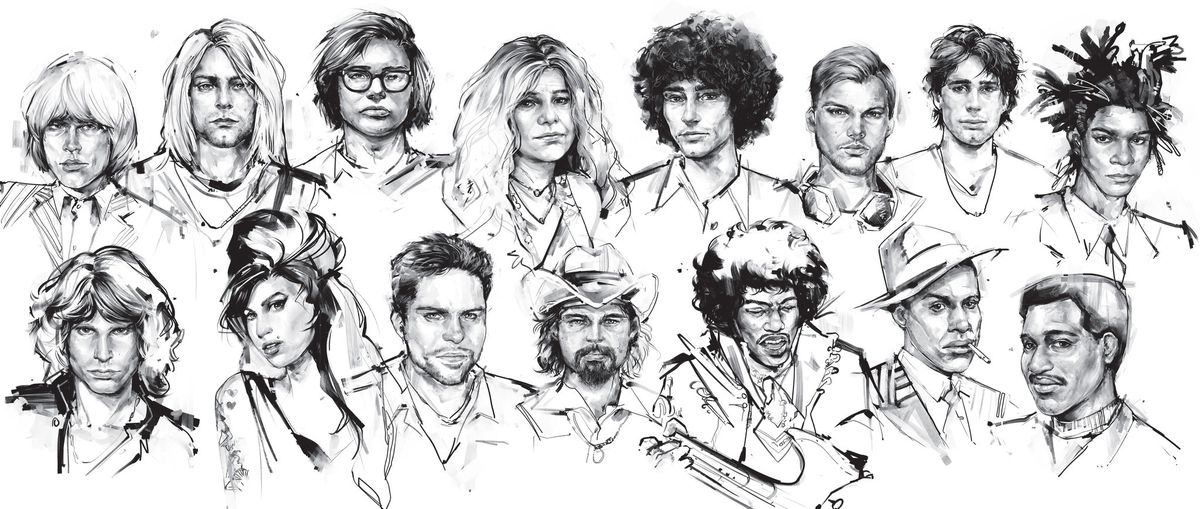The Culture’s Obsession With Dead Musicians

With the recent internet outrage regarding the loss of two rock joints- Lemmy Kilmister and David Bowie- and the release of a bunch of ‘27 Club’ documentaries- Amy Berg’s Janis: Little Girl Blue, Asif Kapadia’s Amy and Brett Morgen’s Kurt Cobain: Montage of Heck- a very strong yet morbid obsession with dead musicians has resurfaced.
The fact that the public has always had an eye for such infamous pop-culture deaths’ raises a few questions- why? And, more importantly, what’s behind such obsessions?
One of the most obvious points is the fascinating similarity between these deaths. Both Lemmy and Bowie died while battling cancer and were only a year apart. On the other hand, the ‘27 Club’ clearly consists of famous musicians that died at the age of 27, mostly due to drug and alcohol abuse. Many conspiracy theories have been doing rounds due to these reasons. Did the Illuminati kill them? Or maybe the FBI did it? Other such insane tabloid rumours keep appearing from time to time to add new angles to their already closed case files. Apart from the gossips and the theories, the most integral reason behind this fixation is the groundbreaking nature of all these artists. For example, all the musicians mentioned above changed the course of music in their ways. Janis Joplin, front-woman of the Kozmic Blues Band was the first prominent female figure in rock and roll. Similarly, Amy Winehouse was a leading figure in bringing back Jazz and Soul to mainstream music. They were both known for their boisterous and bold personalities as well as wild performances. Kurt Cobain, front-man of Nirvana, and David Bowie, both introduced two new genres to the industry, namely grunge rock and art-rock. They were the epicentre of the movements and were both known for defying gender identities and societal boundaries. Lemmy, on the other hand- the founder and front-man of Motorhead- help set the foundations for the heavy metal genre and was known for his hard-living lifestyle and calling himself an anarchist. Far from conforming our typical idea of a celebrity, these artists questioned the very meaning of what a celebrity should be.
The archetype of the “tortured genius” is as old as music itself. Creative self-destruct through substance abuse led to the glamorization of drugs and maybe seeing these stars living “on the edge” is what fascinated us because it is exactly what we can never do. Living a somewhat monotonous and predictable life and witnessing someone in almost lethal positions offers a thrilling sense of catharsis to us.
So, no matter how deep into conspiracy theories one may be, the legends surrounding their deaths are inevitably captivating and as Chuck Klosterman frequently states, “Dying is the coolest thing a musician can do”. It is, rather their dysfunctional lives mixed with their kind and creative personalities is what keeps us forever mourning their loss.
